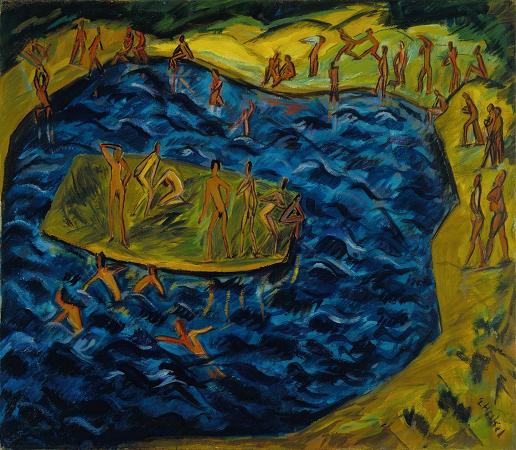Berlin Secession. The Berlin Secession is a German artist group founded on May 2,1898. As the antithesis to the dominant academic art industry of the time, it has since become the leading art association at involving the transfer of Munich artists. Today, this is stylistically referred to as Berlin Impressionism and occupies an outstanding position in German impressionism. The upheavals that led to the formation of the Berlin Secession and other groups of artists began in 1891 on the occasion of the Great International Art Exhibition in Berlin. The dispute was about the Department of Norwegian Artists, which escalated in the following year, after the commission of the Association of Berlin artists had rejected the images of Edvard Munch. In February 1892, under the leadership of Walter Leistikow, Franz Skarbina and Max Liebermann, some painters joined together to form a free association for the organization of artistic exhibitions and organized an art exhibition in the spring of 1892 as Die Elf, without, however, leaving the Verein Berliner Kunstler or to avoid the annual salon-the Great Berlin Art Exhibition. The Free Union of the XXIV was founded in Munich and exhibited under this name in Berlin. A revision of the statutes of the General German Art Cooperative by Anton von Werner and Hugo Schnars-Alquist held in October 1892 still the business association together. But in November 1892, it resulted in a scandal when an exhibition of the works of Edvard Munch was this time closed by a majority of the members of the Association of Berlin Artists and Munch's images were described as repugnant, ugly and mean. The opposing group of painters, however, was not yet strong enough to leave the established exhibition system. Thus the Freie Berliner Kunstausstellung 1893 parallel to the Great Berlin Art Exhibition, in which the Munich Secession was embedded, to which a number of artists had meanwhile joined. The jury of the Great Berlin Art Exhibition in 1898 rejected a landscape painting by the painter Walter Leistikow. Now the proof was finally provided that the modern art of the existing organizations had no support to expect. As a consequence, 65 artists founded the Berlin Secession with Walter Leistikow as organizer. Among the 65 founding members were three artists, among them Julie Wolfthorn and Kathe Kollwitz. The term secession is derived from the Latin term secessio and means separation or splitting off. Max Liebermann was elected president. In addition to the presidents Liebermann and Walter Leistikow, the board formed the artists Otto Heinrich Engel, Ludwig Dettmann, Oskar Frenzel, Curt Herrmann and Fritz Klimsch. Liebermann demanded a separate room for the Secession at the Great Berlin Art Exhibition in 1899; After this was rejected, the members of the Secession closed the association of Berlin artists. From then on, it was also necessary to find suitable own exhibition rooms, which the Secession wanted to rebuild. Liebermann recruited the art dealers Bruno and Paul Cassirer and offered them to become executive secretaries of the Secession. They joined in 1899 and together had a seat on the board but without voting rights. They were responsible for the planning and execution of the building, which was built according to plans by Hans Grisebach at Kantstrasse 12. On May 19, 1899, the building with an exhibition of 330 pictures and graphics and 50 sculptures was opened in Charlottenburger Kantstrasse. Of the 187 exhibitors, 46 lived in Berlin and 57 in Munich. Foreign contributions were still missing but should follow in a later edition. The audience of 2000 invited guests was impressed, the exhibits were perceived as overcoming the prevailing mediocrity. At the second exhibition, the international claim was honored, of which 414 exhibits were over ten percent of foreign artists, including Pissarro, Renoir, Segantini and Whistler. This baffled nationalist circles, so that a conservative minority separated again until 1902 from the Secession. In addition to the summer exhibitions, there were also winter exhibitions reserved for graphics under the title Black and White Exhibitions. At the 1902 exhibition, works by Kandinsky, Manet, Monet and Munch were shown for the first time. For the first time, the trend showed that Berlin Munich declined the rank of art metropolis Germany. When Germany wanted to participate with art in the St. Louis World's Fair in 1904, failed to reach an agreement of the Commission to Anton von Werner and the Emperor with the Berlin Secession. In 1905, the relocation to the then-new larger building on Kurfurstendamm 208, the place where today the theater on Kurfurstendamm is located. Jury members this year were Heinrich Reifferscheid, Philipp Franck, Leo von Konig, Lovis Corinth and Ernst Oppler.
more...




